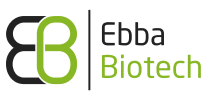Intelligent
sensors
Game-changing solution
in multiple sectors
Richter Life Science is excited to provide the Optotracing™ sensing technology, a disruptive solution beyond the state-of-the-art.
We are committed to translate the cutting-edge research that advances our knowledge base into societal use. By engaging scientists with an entrepreneurial mindset, we bring science to society. Our vision is to offer disruptive, pan-industrial technologies applicable in several marketplaces, thereby aiding in realizing the United Nations Sustainable Development Goals for a healthy planet.
Contact us
Development for the
future in multiple sectors
Healthcare and modern industries depend on analytical devices to thrive in the rapidly evolving data-driven digital environment. Process industry controls and optimizes manufacturing processes with various sensors, and health-care uses biosensors for clinical analysis and diagnostics.
Sensors tailored to emerging industries such as the merger of IT and health care, as well as the growing bio-based industry driving towards a fossil-free bio-economy, are however scarce.
Established and new industries alike have a common need to harness the power of sensor technologies not currently available. This is what Richter Life Science Development wants to change.
MED-TECH
Medical devices
Diagnostics
Pharma Quality Control
Wound Care
Antibiotics Biofilm Targeted Delivery
BIO-TECH
Research Tools
Databases
•Microbes
•Polysaccharide
AI Analytics Big Data
Process Tools
GREEN-TECH
Pulp & Paper
Forestry
Biomass Bioplastics
Biorefinery Biofuel
Textile
FOOD &
AGRO-TECH
Food
•Processing
•Gastronomy
Agriculture
Livestock
Public &
Consumer Products
Public Hygiene
Consumer Electronics
Art & Design

The Optotracing™ Sensing Technology
Optotracing™ is a new, direct sensing technology based on opto-electronicallly active molecules. Binding of the optotracer to a target acts as a light switch – the optotracer starts to emit a signal by which we can identify the target. What used to be black and white can now be seen in a wide range of colors.
Key Features of Optotracing™
Woundcare
Versatile
Fast
Stable
Non-toxic
Accurate
Big data, IoT
Proven commercial viability
The subsidiary Ebba Biotech AB offers the Optotracing™ technology to the global academic and industrial biotech research community. The world’s most prestigious universities such as Stanford, Oxford, and Cambridge have adopted the method and verified its performance.


